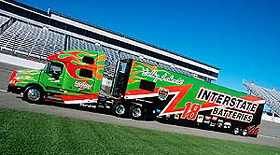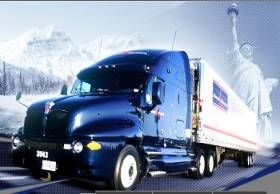Safe Haven Rule Explained
Topic 5936 | Page 1
Page 1 of 1
Anchorman's Comment

10 years, 10 months ago
You all are welcome! We have had some recent posts on what to do if you run out of hours. I thought this might be some helpful info to go along with it.
guyjax(Guy Hodges)'s Comment

10 years, 10 months ago
In other words you drive over your hours and get caught your screwed
Anchorman's Comment

10 years, 10 months ago
In other words you drive over your hours and get caught your screwed
Plain and simple! Thanks for summing it all up.
Anchorman's Comment

9 years, 12 months ago
Bumping this back to the top of the forum...
Page 1 of 1
New Reply:
New! Check out our help videos for a better understanding of our forum features
Bold
Italic
Underline
Quote
Photo
Link
Smiley
Links On TruckingTruth
Done

















Done
0 characters so far - 5,500 maximum allowed.
Notify Me Of New Comments
Submit
Preview
Preview:
Submit
Cancel
This topic has the following tags:
Safe Haven
Click on any of the buttons above to view topics with that tag, or you can view a list of all forum tags here.









 TT On Facebook
TT On Facebook
Safe Haven Rule Explained
The FMCSA’s Safe Haven rule is perhaps one of the FMCSA’s most misunderstood and misquoted rules. Drivers often assume the rule applies to safe and available parking, but that’s not always the case.
Safe Haven rules ONLY apply to certain hazmat drivers. There is NO safe haven rule that allows non-hazmat drivers to exceed hours of service. The term, safe haven, applies to parking locations for hazmat drivers.
The Safe Haven rule is FMCSA section 397.5, ‘Attendance and surveillance of motor vehicles.’
What the rule covers (from FMCSA):
Division 1.1, 1.2, or 1.3 (explosive) material must be attended at all times by its driver or a qualified representative of the motor carrier that operates it. The rule do not apply to a motor vehicle which contains Division 1.1, 1.2, or 1.3 material if all the following conditions exist:
(1) The vehicle is located on the property of a motor carrier, on the property of a shipper or consignee of the explosives, in a safe haven, or, in the case of a vehicle containing 50 pounds or less of a Division 1.1, 1.2, or 1.3 material, on a construction or survey site; and
(2) The lawful bailee of the explosives is aware of the nature of the explosives the vehicle contains and has been instructed in the procedures which must be followed in emergencies; and
(3) The vehicle is within the bailee’s unobstructed field of view or is located in a safe haven.
(c) A motor vehicle which contains hazardous materials other than Division 1.1, 1.2, or 1.3, materials, and which is located on a public street or highway, or the shoulder of a public highway, must be attended by its driver. However, the vehicle need not be attended while its driver is performing duties which are incident and necessary to the driver’s duties as the operator of the vehicle.
(d) For purposes of this section—
(1) A motor vehicle is attended when the person in charge of the vehicle is on the vehicle, awake, and not in a sleeper berth , or is within 100 feet of the vehicle and has it within his/her unobstructed field of view.
(2) A qualified representative of a motor carrier is a person who—
(i) Has been designated by the carrier to attend the vehicle;
(ii) Is aware of the nature of the hazardous materials contained in the vehicle he/she attends
(iii) Has been instructed in the procedures he/she must follow in emergencies; and (iv) Is authorized to move the vehicle and has the means and ability to do so.
(3) A safe haven is an area specifically approved in writing by local, State, or Federal governmental authorities for the parking of unattended vehicles containing Division 1.1, 1.2, or 1.3 materials.
(e) The rules in this section do not relieve the driver from any obligation imposed by law relating to the placing of warning devices when a motor vehicle is stopped on a public street or highway.
Drivers often confuse the Safe Haven rule with the adverse conditions rule which applies to adverse weather and catastrophic wreck or traffic conditions, when a trip that might have taken you two hours on a regular day, may now take you four, causing you to struggle to find safe parking or reach your destination within your allowable driving hours.
Fortunately, the FMCSA has created an exemption that drivers may use for unforeseen weather delays.
According to FMCSA, “If unexpected adverse driving conditions slow you down, you may drive up to 2 extra hours to complete what could have been driven in normal conditions. This means you could drive for up to 13 hours, which is 2 hours more than allowed under normal conditions. Adverse driving conditions mean things that you did not know about when you started your run, like snow, fog, or a shut-down of traffic due to a crash. Adverse driving conditions do not include situations that you should have known about, such as congested traffic during typical “rush hour” periods.
“Even though you may drive 2 extra hours under this exception, you must not drive after the 14th consecutive hour after coming on duty.”
Adverse Driving Conditions 395.1(b)(1)
In case of any emergency, a driver may complete his/her run without being in violation of the provisions of the regulations in this part, if such run reasonably could have been completed absent the emergency.
If the following conditions apply, then you can drive for up to 2 additional hours ( 13 hours total, as long as you do not exceed your 14-hour rule. All Steps must be met- see step below.
1) You unexpectedly run into snow, sleet, fog or other bad weather or a highway covered with Snow or Ice or usual road or traffic condition
2)The person who dispatched your run was NOT and could not have been aware of those conditions
3) The run is one that you could have normally complete in 11 hours and
4) You are able to complete the (extended) run without exceeding the 14 or 70-hour limits
YOU CAN NOT use the adverse driving conditions exception for delays that YOU should have known about, such as congested traffic during rush hour.
When you use this exception, it’s a good idea to enter a note on your log indicting that you are using the exception (found in 395.1(b)(1) and why.
Follow this link for FMCSA guidance on the Safe Haven rule:
CDL:
Commercial Driver's License (CDL)
A CDL is required to drive any of the following vehicles:
Consignee:
The customer the freight is being delivered to. Also referred to as "the receiver". The shipper is the customer that is shipping the goods, the consignee is the customer receiving the goods.
HAZMAT:
Hazardous Materials
Explosive, flammable, poisonous or otherwise potentially dangerous cargo. Large amounts of especially hazardous cargo are required to be placarded under HAZMAT regulations
Shipper:
The customer who is shipping the freight. This is where the driver will pick up a load and then deliver it to the receiver or consignee.
Sleeper Berth:
The portion of the tractor behind the seats which acts as the "living space" for the driver. It generally contains a bed (or bunk beds), cabinets, lights, temperature control knobs, and 12 volt plugs for power.
CSA:
Compliance, Safety, Accountability (CSA)
The CSA is a Federal Motor Carrier Safety Administration (FMCSA) initiative to improve large truck and bus safety and ultimately reduce crashes, injuries, and fatalities that are related to commercial motor vehicle
FMCSA:
Federal Motor Carrier Safety Administration
The FMCSA was established within the Department of Transportation on January 1, 2000. Their primary mission is to prevent commercial motor vehicle-related fatalities and injuries.
What Does The FMCSA Do?
DOT:
Department Of Transportation
A department of the federal executive branch responsible for the national highways and for railroad and airline safety. It also manages Amtrak, the national railroad system, and the Coast Guard.
State and Federal DOT Officers are responsible for commercial vehicle enforcement. "The truck police" you could call them.
Fm:
Dispatcher, Fleet Manager, Driver Manager
The primary person a driver communicates with at his/her company. A dispatcher can play many roles, depending on the company's structure. Dispatchers may assign freight, file requests for home time, relay messages between the driver and management, inform customer service of any delays, change appointment times, and report information to the load planners.HOS:
Hours Of Service
HOS refers to the logbook hours of service regulations.OWI:
Operating While Intoxicated